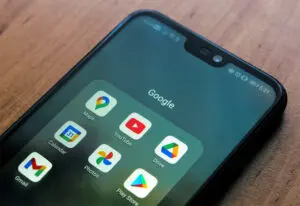
Does Email Marketing Still Work in 2023?
Hook. Click. Convert.
Email marketing spans brand types, audience demographics, and borders. For decades, it’s showcased the importance of a wide-reaching network and specialized messaging regarding brand awareness, loyalty, and longevity. But does this type of marketing have a place in 2023 and beyond? Read on!
Email Marketing: A Relic In The Digital Age?
The history of email marketing dates back to—you guessed it—the advent of email. Well technically it was seven years after (1978), but we’ll chalk that up to ‘ironing out the wrinkles.’ A brief history for all you marketing buffs like us:
- 1971 — Engineer Ray Tomlinson invents and sends the first email.
- 1978 — Gary Thurek creates an email campaign for Digital Equipment Corp, which reaches 400 people and results in $13 million in sales.
- 1988 — Quick intermission for “spam” to be added to the Oxford English Dictionary.
- 1991 — Hotmail makes it possible for everyone to have an email, exponentially expanding the market for email campaigns.
- 2003 — “Can-Spam Law” introduced to regulate junk mail for users.
- 2009 — Responsive emails make it possible to read devices from anywhere.
- 2012 — Data shows over 40 percent of emails are opened on mobile devices, changing how marketers approach email and paving the way for automated campaigns.
- 2022 — There are now 4.6 billion email users worldwide.
In the digital age, the lifespan of technological advancements seems to get smaller and smaller—therefore the question: is email marketing now a relic? Obsolete? Like yelling into the void?
The short answer is ‘no, but…’
What Works
Let’s expand on that ‘but’ a bit with what works about email marketing and why. Despite pre-dating the Internet, email is still going strong. And its over four billion users send about 333 billion emails daily—with half that group buying from marketing emails each month. That’s a lot of potential business for your brand. Before jumping into the Dos, it’s worth noting the different types of email marketing your brand can produce:
- Lead nurturing: Targeting a specific audience to move them from the considering to the purchasing stage.
- Welcome emails: Introduce new customers to your brand, often with a welcome offering or promo code.
- Newsletters: Periodic emails (typically once or twice a month) that inform customers about new products, deals, blogs, and other relevant information.
- Confirmation emails: Timely emails that confirm sign-ups, purchases, or customer-service-related inquiries.
- Invite emails: Announcement emails that invite subscribers to a particular event/seminar or announce a new product launch (“be the first to know”).
- Promos: Typically generic emails to a wider audience that raise brand/product awareness.
- Surveys: Emails asking for customer feedback about a product or service.
- Seasonal marketing: Emails linked to holidays or a particular season, typically about sales or promotions.
The overall goal of email marketing, regardless of type, is to stay in touch with both current and potential customers. They remain a cost-effective way to provide value and stay relevant with your audience consistently and can motivate them to take action.
Now, to what works:
Personalization
When marketing your brand, it helps to think like your customer. In the spirit of that, imagine your ideal customer is like most people (read: 99 percent) and checks their email every day, sometimes up to 20 times. With the sheer volume of emails coming in, that interaction looks a lot like check, check, check, delete all. But now imagine how a personalized message might create a pause long enough in this routine deletion for them to actually read the email. There’s that hook we’re talking about.
Personalized messaging is partly why email has retained its relevance all these years later. The data also backs it up, with a reported 50 percent higher open rates for personalized subject lines. Targeting messaging may begin with the subject line but shouldn’t end there. This could be a customized greeting, a personalized industry topic, or even a landing page that aligns with the email content.
Segmentation
Speaking of personalization, segmentation in email marketing is a great way to ensure your messaging is as targeted as possible. With customer research, you should already have a good idea of their varied interests and preferences. Then, you can divide and conquer by segmenting your email lists with these preferences in mind (i.e., by product type, demographics, etc.). With the ease of CRM software, sending more tailored content through segmentation results in higher open rates, more revenue, and more conversions.
Mobile-Friendly
Now that most of our online social interactions and queries take place on mobile, it’s no wonder that a majority (41 percent) of our email views also come from these devices. Being ‘mobile-friendly’ means optimizing for mobile with “mobile aware” or “responsive design” — something that considers user experience and can increase unique clicks by fifteen percent.
The tip here is the same as personalization: put yourself in your audience’s shoes. Do this by creating responsive designs, subject lines and snippet text short, and CTAs big and bold.
Automated Journeys
From 2012 to now, automation has exploded in popularity and use. For email marketing, it helps to remove the first word for a second and think about the journey. How did your customer sign up for brand emails (from a purchase, website form, or a lead generation campaign)? Have they made a purchase? What will take them to go back to that abandoned cart?
Automated or “trigger” emails respond to customer actions. Things like forgetting to finish the sign-up process, leaving items in a cart, not purchasing for a few months, and yearly rewards can all trigger an action. These journeys generally lead to higher open and click-through rates and increased brand loyalty.
Interactivity
The last big thing that still works in email marketing is interactivity. Think of this as a personalization’s cousin. The general idea is to give an immediate payoff for a customer choosing your email of their dozens or hundreds a day to click on. One big way to do this is by adding video, which results in an average 300 percent click rate increase.
After all, if you’re meeting your audience where they are (in their inbox), why not entertain them?
What Doesn’t Work
Equally important, but not nearly as fun, is what doesn’t work in email marketing. If ignored, these things will take your brand’s use of email from relatable to relic. They include:
Spammy Tone/Content
Spam is one of those “you’ll know it when you see it” things. The emails tend to have a smarmy or slightly shady tone, pixelated images, hidden unsubscribe buttons, or strange return addresses. If one of these emails does happen to cross your customers’ spam filters, we bet you can guess what happens: check, check, check, delete all.
With so many brands and individuals competing for attention in your customers’ inboxes, establishing trust factors is a must. These include using a real address in the reply (instead of “no reply”), links to socials, adding opt-in forms, and making unsubscribe links visible. It also doesn’t hurt to brush up on spam trigger words (like “buy direct” and “earn extra cash”) and email regulations.
Failed Targeting
Nearly everything we do in marketing begins with research, especially for audiences. After all, if no one (or the wrong someone) sees your content, it’s not doing what it’s supposed to do. Email marketing likewise needs targeting to capture interested audiences. You can avoid this error by creating buyer personas, segmenting your lists, and personalizing the experience.
Copy & Design Errors
Let’s face it; nobody wants the “oops we made a mistake” email from a brand. And you don’t want to be that brand. Copy and design errors go beyond spelling mistakes, though. This step also includes creating intriguing subject lines and headers, body copy that doesn’t confuse your reader, and clear CTAs. For design, this means following design best practices as well as making sure it’s mobile-friendly.
Failure to Test
Not testing your content can do more than trigger those “oops” emails. In addition to broken links, misspelled words, or “video not available” errors, failure to test can also limit your email campaign’s reach and efficacy. By conducting regular A/B tests of subject lines, CTAs, designs, landing pages, and target audiences, you can ensure your email gets in front of the right people at the right time.
Email Marketing Metrics of Success
We’d be remiss if we talked about what does and doesn’t work with email marketing and not mention the metrics of a successful campaign. Key performance indicators (KPIs) are used to quantify performance. For email campaigns, these metrics can include:
Open rate: Number of emails opened compared to total delivered.
Click-through rate: Percentage of recipients who clicked a tracked link in the email.
Unsubscribes: The number of recipients who unsubscribed from your list.
Spam score: The rate recipients marked your contact as spam.
Bounce rate: How many subscribers did not receive your email.
Conversion rate: Percentage of recipients that perform the action you want them to (read blog, purchase a product, book a service, etc.).
Return on investment: How cost-effective the campaign is (money made on sales divided by money spent on campaign times 100).
Brand awareness: Okay, this is less quantifiable but can be seen by list growth rates (those who opt-in), forwarding/sharing rates, engagement over time, and increased engagement on other platforms like social media.
Brands Examples That Have Us Clicking
As always, we love to see brands bringing marketing best practices to life:
Starbucks
Starbucks checks all the boxes in “what works” and then some. From welcome emails to promos for customer loyalty, the coffee juggernaut uses witty copy, entertaining animation, and clear CTAs to capture attention and drive conversions. Their My Starbucks Rewards subscriber list in particular is an excellent example of how personalization and value lead to long-term brand loyalty.
Warby Parker
Warby Parker typically makes ‘best of’ lists for their simplistic design and eye (pun intended) for detail. The glasses brand’s range of journeys—abandoned cart, subscriber, purchase—are masterfully handled, with each utilizing personalization, segmentation, and mobile-friendly designs. Their consistent testing and correct timing make for strategic marketing.
Headspace
The last example is Headspace, the mental health and mindfulness brand. Their campaign approach mirrors their brand voice and goals of being a calming, supportive presence. The brand’s onboarding emails in particular are a beautiful balance of intriguing design, engaging copy, and clear CTAs (“start meditating,” “start lesson,” “get two months free”).
Time to Get Savy With Your Email Marketing Campaigns
When it comes to the question if email marketing still works in 2023, our answer is a resounding yes—but it takes strategy, research, and creativity to meet your audience where they’ll connect and convert. At Savy, we take an integrated approach to all things marketing. From social media and short-form blogging to SEO and email marketing, we work with our clients to strategically identify the right channels, goals, and messaging. Let’s get to work.
Recent Posts
Custom Website Design and Development vs. Off-the-Shelf: What’s Right for Your Business?
Having a website that represents your brand and serves your business effectively can make or break your success in 2025. This poses the important question: Should you opt for custom […]
Read MoreHow to Rebrand Your Instagram for Better Engagement and Brand Recognition
Your Instagram presence can act as a beacon for brand recognition and customer engagement. It’s about painting a picture so compelling that your audience cannot help but be drawn to […]
Read MoreFrom Clicks to Conversions: The Science of High-Performing Digital Ads
The journey from interest to purchase is often paved with digital advertisements. However, not all digital ads are crafted equally. While some fade into the background, others command attention and […]
Read MoreBrand Consistency Examples That Will Make You Rethink Your Marketing Strategy
A consistent and strategic brand identity across all platforms is not just beneficial; it’s essential. By exploring real-world brand consistency examples, we uncover the immense power of maintaining a coherent […]
Read More3 Ways to Transform Blogs With SEO and Make Google Love Your Content
As marketers and business owners, our goal is to ensure the blogs we publish confidently stride into the spotlight of Google’s top search results. Achieving this requires great content, but […]
Read More



